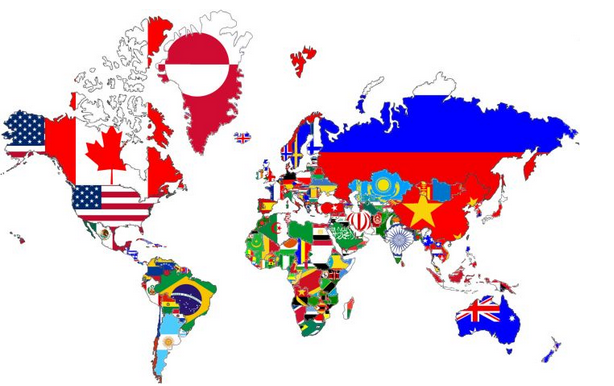By Anna Schlegel, NetApp’s director of globalization strategy
So, you want to be a truly global organization? Making that a reality is a complex process—especially for companies that don’t have globalization expertise in their DNA quite yet.
It’s a discipline. And you can’t wing it. But if you can master this, you can own the world (or, at least, a piece of it!)
So, you want to be a truly global organization? Making that a reality is a complex process—especially for companies that don’t have globalization expertise in their DNA quite yet.
It’s a discipline. And you can’t wing it. But if you can master this, you can own the world (or, at least, a piece of it!) 
Succeeding outside your home country is a desire for all top companies. Wherever you call home—be it the United States, the United Kingdom, Japan, or India—growth outside your own borders is completely different from growth inside.
Don’t underestimate how hard this is: Markets are volatile, and apparently “global” employees may not be plugged into the global realities. So how do you focus your teams towards the agility to hit hard in the countries that matter?
Let me share with you my four habits of successful global companies:
1. Have A Global Growth Model
You can’t execute on a plan until you have a plan.
Get your sales and strategy executives to carefully map out three types of countries:
- Revenue generating
- Sustaining
- Opportunistic
Choose your own labels, but map countries into categories. For example:
- Countries that will bring you the most revenue
- Countries where you’ll use partners exclusively
- Countries where you’ll only sell direct
- Countries with a mixed model
The idea is to help your company rally around the biggest opportunities, and discover what to do for the rest.
Having a model—and communicating it—allows downstream teams to make investments and tradeoffs. Don’t let your teams guess.
2. Educate The Company On The Global Growth Model
Now that you have a plan, and leaders are clear and agree on a growth model, make it known.
Develop an education strategy around it. Start from the top and work your way down. Do it often, with leadership at the front setting a clear message of the importance of this strategy.
Companies that explain to their employees how to interpret country priorities have much higher chances of succeeding globally. Don’t keep it at the executive level. Don’t keep it just within sales: Let your Web teams know, let your paid-media teams know, let your engineers code for those countries.
Make it a rallying cry and focus, focus, focus. Make it an executive mandate.
I remember the day Eric Schmidt told a Google all-hands that everyone was going global. They had three months to launch several utilities and programs in a large set of languages. Go! No questions. Period.
Focus your budgets, realign your thinking, and make it happen. Accept no excuses.
To be number in one in your market, you need to invest, prioritize and be committed. What this needs is a response from each department to this rallying cry. Don’t let it just happen organically.
3. Create A Globalization Team
You have the plan, you have a strategy. Now build the team.
Once the model is known, there will be questions. Enabling, coaching and consulting will be needed, and roadmaps will need to come to fruition. The globalization team will help keep it all together and connect the dots.
The team should oversee internationalization and localization efforts. The team should understand cross-company roadmaps. They can also educate departments on what others are up to.
You don’t need a full-blown team if you’re new at this, but believe me: Without a globalization team, your strategy will fail.
Have the team report at the CEO-staff level once a quarter. They can report on how the strategy is progressing, how it’s being implemented across departments, and provide insight into what they’re seeing.
4. Introduce “Global” Into Your Hiring Strategy
The plan may be brilliant, the education superb, and your globalization team set up. But there’s one more ingredient—perhaps the most important of all: Hiring professionals who have “global” in their DNA.
This involves being able to put your “field glasses” on, or being able to pretend you are working in another country besides your own. This person can see how an idea or program will resonate and work in other countries.
Hire people across the company who’ve run global programs before. They should have actually been successful and impactful in more than one country.
Make globalization part of your interview process. Avoid giving someone a “global” role if they can’t prove it to you. Having Global in your title means you know how to deploy, think, strategize, localize and plan to be successful in the countries in your global strategy.
A multibillion dollar company can’t afford managers who don’t know how to make the proper investments outside of Headquarters.
The Bottom Line
As a leader, your focus on consistency should be unwavering.
Just as you do in your home country, get under the skin of the international audience. Live and breathe what they demand. If you’re going to talk the talk, you’ve got to get into their shoes—and walk the walk.
How global are you? Weigh in with a comment below, and follow Anna N. Schlegel (Google+) @annapapallona (Twitter).
